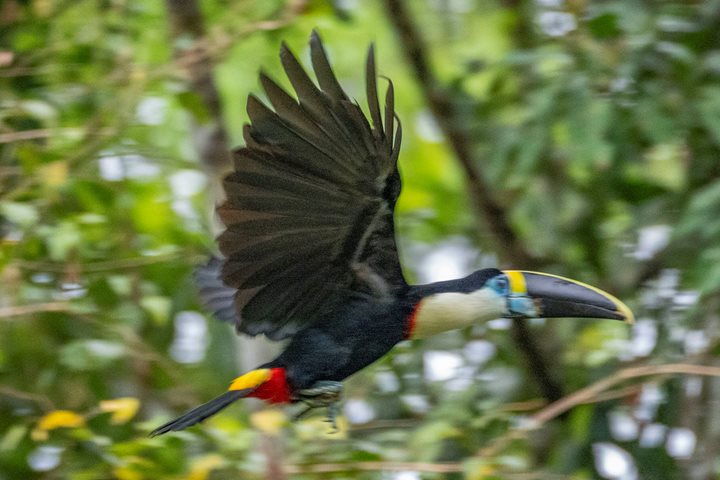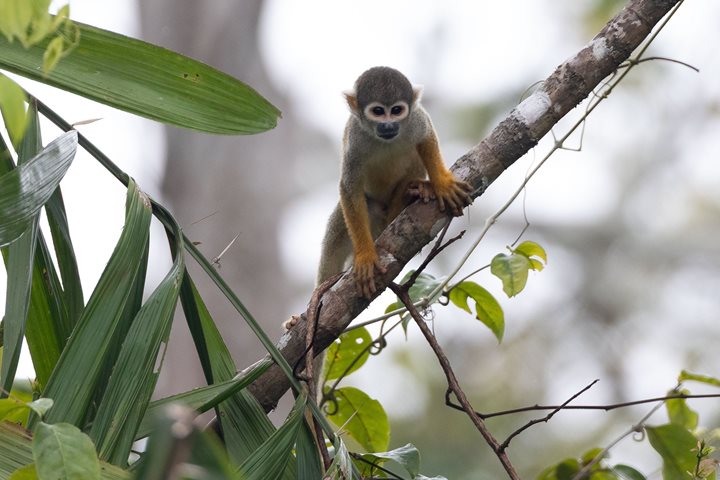Today we awoke to cloudless skies, a fantastic sunrise, and warm temperatures. It is safe to say we have now seen the range of weather patterns that are common in these parts. Upon boarding the Delfin II at the beginning of our epic adventure, we had a heavy downpour, and the past few days have been mostly cloudy. After breakfast, we donned extra sun protection and we set out to explore the Magdalena River via skiff.
The story of the Magdalena River is a familiar one in this region. It is the story of meandering erosion patterns and the resulting oxbow lakes. Hydrogeologists who study rivers have learned that along the outside edge of a curve in the river, the water moves faster, carrying a greater capacity for eroding the riverbank. The inside curves tend to have slower moving water where sediments fall out of suspension and are deposited. Over centuries this results in fantastic landscapes of ancient river channels which during high water are flooded and become oxbow lakes. These bodies of water have become part of our focus in exploring this region.
Our skiff drivers have an exceptional ability to spot amazing wildlife along the way. This morning we observed many fascinating bird behaviors which were carefully interpreted by our naturalist guides. From a distance, through binoculars, we spotted a group of lettered aracaris eating fruit. Although we didn’t get a great look, we heard the complex vocalizations of the thrush-like wren and, shortly after, the fantastic and iconic call of a juvenile great black hawk. Soon after, we saw a great black hawk fly through the treetops with a snake in its mouth! Then we spotted a tree full of great kiskadees and yellow-rumped caciques actively ferrying twigs and plant material from the forest to build nests. We got a quick glimpse of a brown capuchin monkey with a baby on its back. We were also lucky with woodpecker sightings this morning: six yellow tufted woodpeckers at the top of a tree hammering away and one chestnut woodpecker going in and out of a hole in the tree which was likely its nest. Finally, a cocoi heron flew along the riverside and landed on a surprisingly small branch for such a large bird. I should note this list is much abbreviated. There were many more fascinating bird behaviors we witnessed, just too many to list here.
By far though, the highlight of the morning was a sighting of the two-toed sloth with a baby. Our naturalists and skiff drivers were jubilant, and all three skiffs enjoyed a great view of this wondrous and somewhat rare-to-see creature.
During lunch our bridge team brought us further upriver to the confluence of the Rio Dorado and the Ucayali where we set out to explore via skiffs. In the early afternoon we experienced a very heavy downpour of rain which conveniently cleared right before our skiff exploration in the afternoon.
As we explored up the Dorado River, we were delighted with many wonderful sightings of birds including a nesting wattled jacana, a black caracara, and many sightings of horned screamers. We also saw three different three-toed sloths, including a pregnant mother and we watched her scratching for quite a while.
Then, on the way back to the ship, when most of us already stored our cameras, our eagled-eyed skiff driver, Eddison, spotted a juvenile harpy eagle on a branch. This the largest bird in the Amazon and the top predator. Since it was already after 6pm and the bird was high up in a shady tree, it made for a difficult photo, but through binoculars, most were able to find a clear view. Everyone was glued to their binoculars and beaming with excitement for this very rare sighting of the bird known as the King of the Amazon.
Today was a day most of us will never forget.







